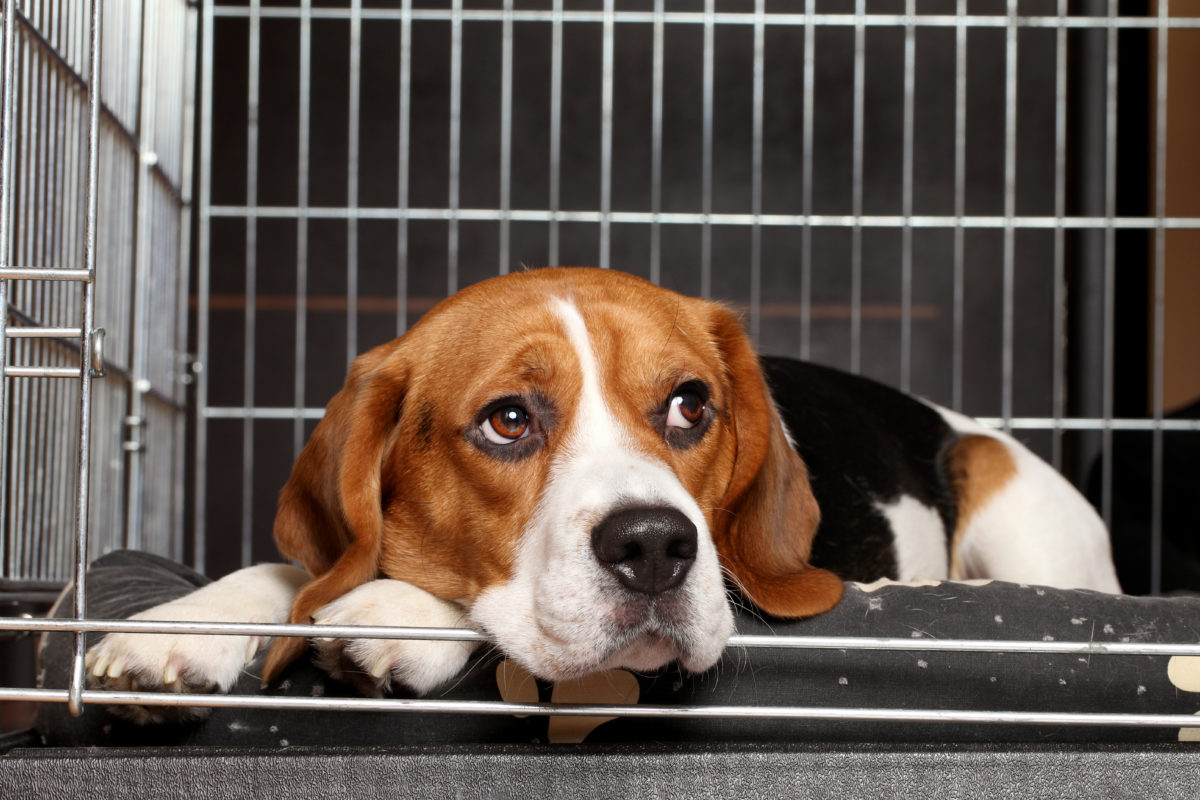
Crate Training
Crate training is an extremely valuable tool. It can be useful in all kinds of situations. With a new puppy or dog, crate training is a great way to start teaching them the rules of the house such as going to the bathroom and what they shouldn’t be chewing on.
A crate can also be a helpful way to transport your dog in situations where you don’t want them to be moving freely around your vehicle. If done correctly, your dog will come to see the crate as a safe and relaxing place.
What Type of Crate Should You Use?
Crates are often made out of plastic material or collapsible metal. Crates designed for dogs come in many different sizes and you’ll want to make sure the crate is large enough for your dog to move around comfortably. Initially, the crate should be approximately one and a half times your dog’s body length, not including the tail.
Crate Training Process Basics
Crate training will take effort on your part, and should be done in small steps. It is also important that you always associate crating your dog with something pleasant, or they will learn to resent having to go into the crate which is the opposite of what you want. Here are some of the key steps in crate training your dog:
- Begin by introducing your dog to the crate. Start out by putting the crate in an area where the family spends most of their time. To encourage your dog to enter the crate, put some treats all the way inside. Don’t force your dog in. Just keep trying until the dog walks in calmly.
- Provide meals while they are in the crate. Feeding your dog in the crate creates a pleasant association with the crate and will make your dog much more likely to willing get in the crate and feel comfortable when inside.
- Slowly condition your dog to longer periods in the crate. When your dog starts to feel more comfortable with the crate and doesn’t show any anxiety about going into the crate you can begin to leave them crated for longer. Start by leaving them alone for a few minutes and gradually increasing how long you leave them alone. This process could take days or weeks to fully integrate.
Crate Training Issues
The main problem that can arise with crate training is rushing into things and not letting your dog acclimate to being in the crate. Leaving them in the crate for long periods of time right off the bat can cause fear and anxiety which is counterproductive. If your dog is exhibiting symptoms of fear and anxiety related to the crate, you may need to reevaluate what you are doing.
Do not use your crate for punishment. However, if your puppy is “acting out ‘ (nipping, chewing, over-stimulated play, etc), you can use the crate for a timeout. this will give your dog an opportunity to refocus and calm down The difference between punishment and timeout is the length of time your dog is in the crater. A timeout should be anywhere from 3-5 minutes, no longer.
Michael’s Pack Training Services
If you have gotten a new puppy or dog, Michael’s Pack can help with things like potty training and crate training. Contact us today to learn more about our services and to find out how we can help you, as well as your new furry friend! We offer in home training in New Jersey and New York or individual or group training at our facility in Mineola, Long Island.
